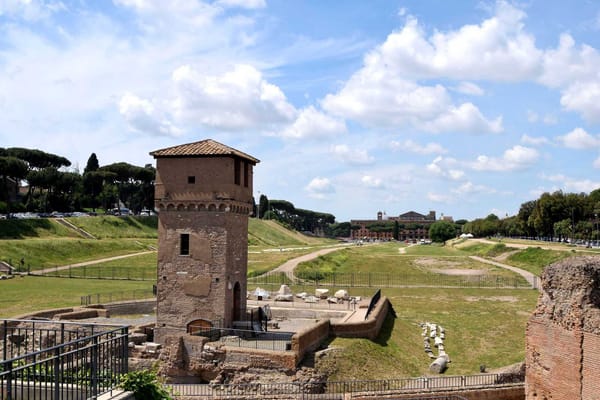Humble Costume or Smart Branding? Zuckerberg’s Halloween Roman Look Explained
Zuckerberg’s family dressed up as Romans for Halloween—simple costumes, big reactions. The look fits a long pattern: he keeps it low-key while steering attention. Rome had a word for that balance. So do markets.

In the new photo Mark Zuckerberg shared on Facebook, a family poses in Roman-themed costumes: a plastic helmet and cape for the adult in the center, toy bow and fawn for another, children with play swords and wings; garden backdrop, hay bales, fake webs, skull props—the whole suburban Halloween set.
It’s cheerful and intentionally low-effort: slides on the feet, off-the-shelf tunic trim, nothing couture. The image landed because it continues a running thread in his public persona—Roman callbacks—and because it invites two opposite readings at once:humble family fun versus well-timed image craft.

What the picture is doing
At face value, it’s a dad joke in costume form: Roman soldier, huntress, winged kids—classical clichés straight from a party aisle. The “ordinary” choices are the point. Public figures know that heavily styled Halloween shoots can backfire; this one is easy to like because it looks unproduced.
The backdrop is the only theatrical element; the clothing is intentionally basic. If you’ve followed his Roman nods—T-shirts with classical Easter eggs, the sculpture gift to his wife, the cheeky Octavian references—the Halloween version feels like the family-friendly sequel.
There’s also a platform logic: simple photos travel better. You don’t need context to get the joke, and the image is shareable even by people who disagree about him. In a week where his company’s stock has whipsawed and his personal ranking on the rich lists keeps making headlines, a light, wholesome post meets the moment: it drains heat, not adds to it.
Humble signal or polished strategy?
- The “humble” read. The outfits are obviously inexpensive—party-store helmets, toy swords, fabric tunics, rubber slides. That lands as relatability: a household doing what millions do, not a designer photo-op. It also reinforces a long-standing uniform—plain tees, jeans—that says “builder,” not celebrity. In an attention economy, choosing low-cost costumes is a signal that the family is normal, grounded, and comfortable looking a bit goofy online.
- The “strategy” read. Public images don’t float free of context. The same year he leaned into ultra-high-end watches—Greubel Forsey pieces near $900,000 and other luxury models widely reported—he also posts a no-frills Halloween tableau. The contrast itself is useful: the accessible photo meets the largest audience; the luxury items surface in niche channels and style media. Two lanes, two publics. In other words: a cheap toga can be good communications.
What about “Temu/Amazon Roman costumes”? Some commenters tag mass-market marketplaces whenever they see budget outfits. There’s no evidence the family sourced these from any one retailer, and nothing in the post promotes a brand. The broader point stands: budget-looking was likely the brief. Whether it was Temu, Amazon, Party City, or a mix, the optics are the same—“regular family, regular Halloween.”

Rome did this too: elite modesty to win trust
If the photo reads as modesty with a purpose, that’s very Roman. Elites in Rome often performed simplicity to align with popular ideals:
- Augustus cultivated frugalitas and civilitas in public. Biographers note his preference for modest houses on the Palatine (by imperial standards) and for garments woven by family. The message was not poverty; it was restraint—ruler as first citizen, not king.
- Cato the Elder made a career out of rustic austerity: plain dress, hard work, suspicion of luxury. It was a political brand aimed at voters who valued the old virtues.
- Cato the Younger likewise favored a coarse cloak and unadorned life to project independence and moral toughness.
- Trajan’s civilitas—walking among citizens, eating simply with officers—became a template for later emperors trying to look approachable.
None of these men were “plebeians.” They were wealthy and powerful. But acting within plebeian norms in dress, food, and public gesture was a known route to credibility. Romans understood the theater of modesty; so do modern audiences. A plastic centurion helmet is today’s way to say, “I’m not above your holiday.”
Why it lands now
Markets and media set the frame. Meta’s latest results were strong on revenue but jittery on costs and capital spending, and the stock fell; headlines about the Bloomberg Billionaires Index tracked a large one-day drop in his paper wealth and a shift in rank. Against that noise, a calm family post is useful—no statements, just play.
The image also taps a broader cultural moment. The Roman Empire meme has lingered, and his past Roman hints mean the reference feels on-brand. It’s theatrically unserious—a safe way to keep the Roman thread alive without seeming imperial about it. And by choosing visibly inexpensive costumes, he cedes the spotlight to the family. That’s smart: it draws engagement from supporters and critics alike while sidestepping policy fights, antitrust, or AI spending debates.
There’s a second reason the picture works: it reconciles two stories that often clash. One is the everyman engineer: hoodies, tees, builder ethos. The other is the luxury collector: seven-figure watches and private-market rarities. Both are true and both are modern. The Roman answer would have been familiar—moderatio in public, magnificentia where it served the state. Today the split is simpler: low-fi for mass reach, high-end for niche clout.
Bottom line
The photo is Halloween fun. It’s also a small lesson in image craft. By going intentionally simple—family scene, bargain costumes, a joke everyone gets—he reinforces an approachable through-line that has served him for years, even as other signals (from watches to labs) declare how large the project has become. Rome would have understood the move.






About the Roman Empire Times
See all the latest news for the Roman Empire, ancient Roman historical facts, anecdotes from Roman Times and stories from the Empire at romanempiretimes.com. Contact our newsroom to report an update or send your story, photos and videos. Follow RET on Google News, Flipboard and subscribe here to our daily email.
Follow the Roman Empire Times on social media: